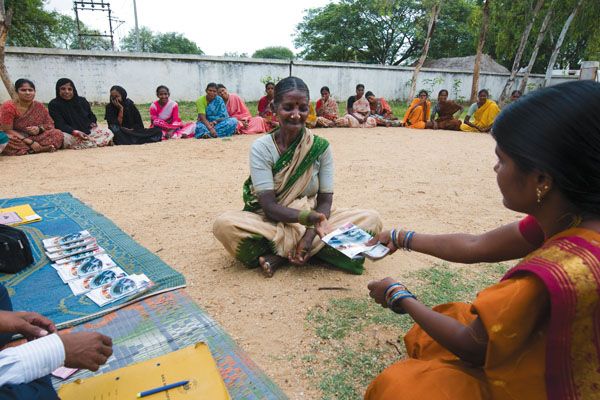
Why Microfinance Is A Different Kind Of Finance
How could one company evade the economic crisis practically unscathed? What made this model so different from any other?
All of us witnessed in 2008 the unfolding of the worst economic crises in our lifetime that extended across every market around the world with rising unemployment rates, stock market volatility, widespread bankruptcies and limited access to liquidity. Most importantly, the capability for credit to build a modern economy came under question.
Mexico in particular faced a devastating ripple effect with its U.S. export dependent economy. In 2009 the Mexican economy suffered a GDP contraction of 6.5 percent, the peso devalued by 30 percent and unemployment grew from 3.5 percent to 5.2 percent. Moreover, many small, medium and large enterprises faced diminishing buying power from their customers, sparked by the widespread layoffs in the formal sector.
However, a different story unfolded in the case of Compartamos. While most Mexican banks were suffering default rates for their credit card and mortgage lending portfolio of 11.3 percent and 17.9 percent, respectively, Compartamos had a default rate of less than 2 percent over its entire loan portfolio in the first quarter of 2009.
While consumer lending by the banking sector declined by 34 percent from January 2008 to 2009, Compartamos’ loan portfolio grew in volume by more than 30 percent. While the Mexican stock exchange gained a yield of 43.5 percent in 2009, Compartamos stock obtained a market yield of 170 percent in the same period (from $25 pesos in 2008 to $67.5 pesos in 2009), during one of the worst periods of the economic crisis.
How could one company evade the economic crisis practically unscathed? What made this model so different from any other? Why is microfinance a different kind of finance?
To answer these critical questions, we must dig deep into the following:
Know your customer: How does the group lending methodology help us better understand our customers’ needs and credit risk profile? How does extending a system based on trust reduce the asymmetries of information that exist for lending to the bottom of the pyramid?
Unemployment and the informal sector: What inherent characteristics in the micro entrepreneurs business lending activities allowed them to adapt quickly to changing local market conditions as a result of the crisis while continuing to demand microcredits?
Diversify access to funding: How did tapping into the capital markets help Compartamos withstand the liquidity crunch other MFI´s faced in Mexico?
Gain operational efficiency and expand: What were the key operational advantages that Compartamos achieved and consequently allowed them to maintain their profit margins without increasing costs to the customer?
We believe that part of the answer to these questions is grounded in a key component essential to the survival of microfinance: Communal trust. We look forward to exploring these key issues further Nov. 10-11, 2011, at the Thunderbird Global Business Dialogue in Glendale, Arizona.
Carlos Danel is co-founder and co-CEO of Mexico’s Compartamos, which means “let’s share” in Spanish. He is scheduled to speak Nov. 10-11, 2011, at the Thunderbird Global Business Dialogue in Glendale, Arizona.
[This article has been reproduced with permission from Knowledge Network, the online thought leadership platform for Thunderbird School of Global Management https://thunderbird.asu.edu/knowledge-network/]















